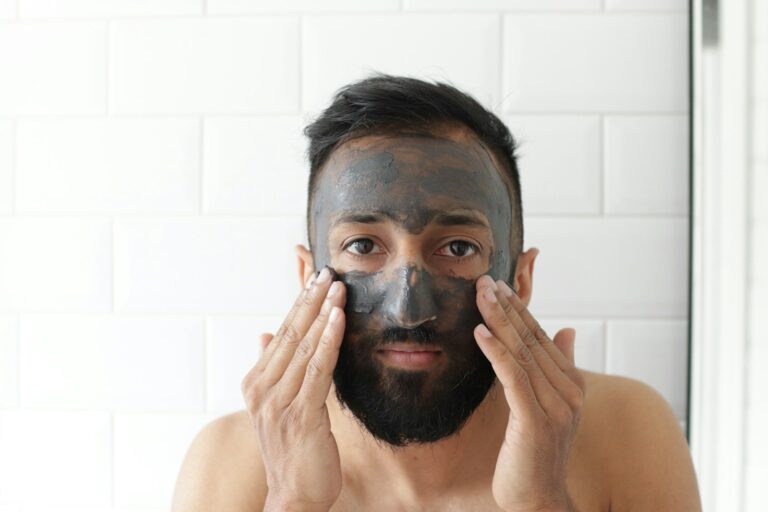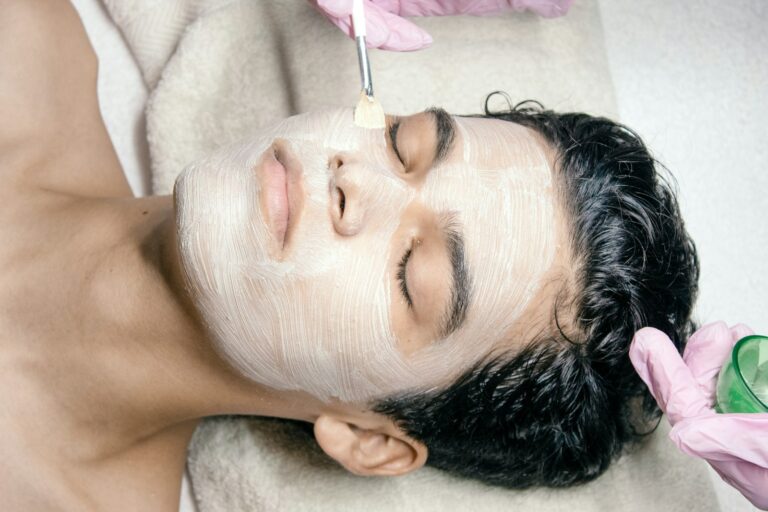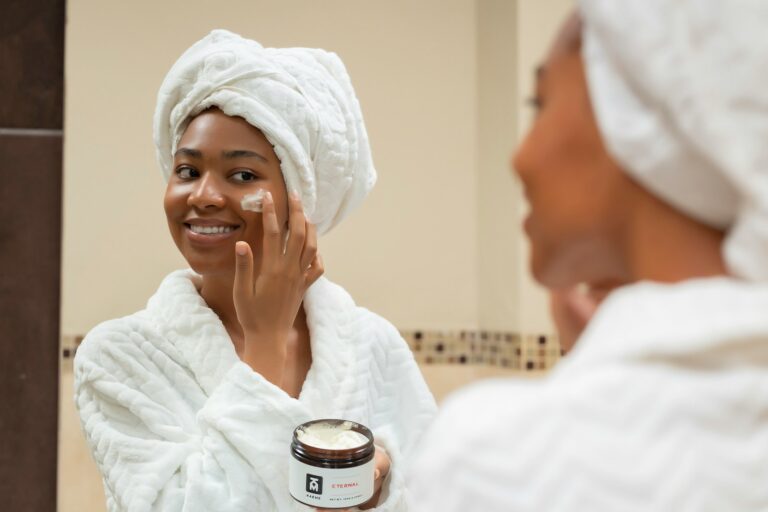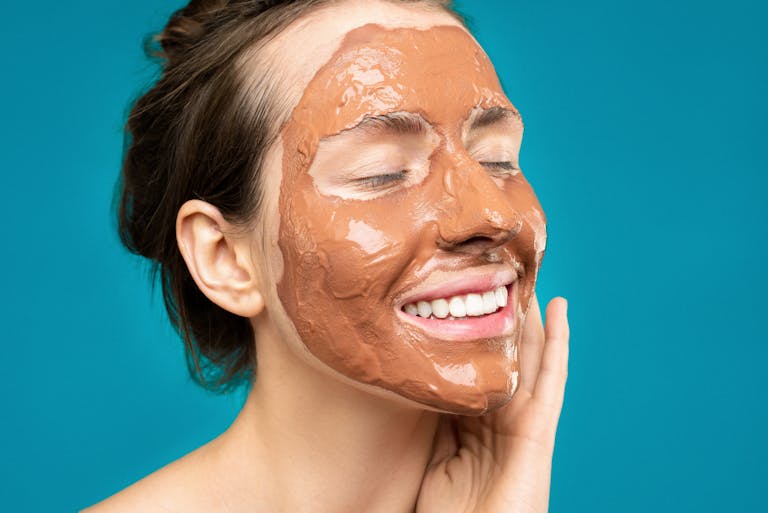You may not realize it, but the climate where you live plays a significant role in the health of your skin and your daily skincare routine. Different regions exhibit variations in humidity, temperature, and UV exposure, all of which can lead to a range of skin concerns from dryness to sun damage. Understanding these factors will empower you to make informed choices about your skincare regimen and help you combat environmental challenges effectively. In this post, we’ll explore how various climates across the U.S. influence your skin and suggest tailored skincare solutions for each condition.
The Climate Landscape of the U.S.: An Overview of Diversity
Regional Variations in Climate
The United States boasts a breathtaking array of climates, from the arid deserts of the Southwest to the humid subtropical regions of the Southeast. Each area presents unique conditions affecting not only your daily life but also your skin’s needs. For example, if you’re residing in Southern California, the consistently sunny and dry weather means you may experience increased moisture loss, making the use of hydrating skincare products necessary. Alternatively, in the Pacific Northwest with its frequent rainfall and cooler temperatures, you may encounter issues related to excess moisture, which can lead to conditions like eczema and fungal infections.
Understanding your specific climate helps you tailor your skincare routine effectively. For those in the Northeast, where winter temperatures plummet and indoor heating runs rampant, dryness and irritation become prevalent concerns, suggesting a shift to richer creams and barrier repair products. On the other hand, those in humid zones like Florida may benefit more from lightweight moisturizers and products that offer oil control to combat shine and clogged pores.
Impact of Climate Zones on Skin Health
Your skin responds in various ways to the climate zone where you reside. In humid climates, sweat and humidity can lead to blockages and breakouts, necessitating non-comedogenic skincare options. Conversely, in arid areas, skin often requires products rich in hydration to replenish what the sun’s rays and dry air strip away. Adapting to these variations can drastically improve your skin health and appearance.
Different climate zones in the U.S. also influence susceptibility to specific skin conditions. For instance, residents of the Northeast are more inclined to develop winter-related skin irritations due to dramatic temperature fluctuations, while those in high-altitude areas may face challenges such as heightened sun exposure leading to premature aging and sunburn. Therefore, your skincare approach should evolve in sync with the environment, considering local climate patterns, seasonal variations, and your skin’s unique responses.
How Humidity Shapes Skin Physiology
The Effects of High Humidity
In regions where humidity levels soar, such as the Southeastern U.S., your skin may initially feel more hydrated due to the moisture-rich air. However, high humidity can lead to increased oil production, which may provoke breakouts and exacerbate conditions like acne. Sweating becomes a challenge as well; the moisture on your skin can prevent sweat from evaporating effectively, potentially leading to clogged pores. When oil and sweat mix, it can create the perfect environment for bacteria to thrive, further intensifying skin issues.
While the natural humidity can create a dewy complexion, excess moisture can also overwhelm your skin’s ability to regulate itself. As a result, you’ll want to adjust your skincare routine by opting for lightweight, oil-free moisturizers and adding products with exfoliating properties to help prevent buildup and keep your pores clear. Finding balance is key in a humid climate.
The Consequences of Low Humidity
Conversely, low humidity, prevalent in many arid regions like the Southwest, can result in dry, cracked skin. The lack of moisture in the air often leads to trans-epidermal water loss, leaving your skin feeling tight and uncomfortable. In these conditions, moisture barriers weaken, making it easier for irritants and allergens to penetrate, which can lead to further complications such as eczema or psoriasis flare-ups. The lips and hands are typically the first areas to show signs of distress, cracking and peeling under such dry conditions.
Adjusting your skincare routine is important when facing the challenges of low humidity. Switching to thicker creams and incorporating products that enhance hydration levels will support your skin’s defenses. Adding a humidifier to your living space can also make a noticeable difference in combatting those harsh, dry conditions. Not only does this practice help your skin retain its natural moisture, but it can also ease respiratory discomfort often associated with dry air.
The Sun’s Role: UV Exposure and Skin Damage
Understanding UV Radiation
Ultraviolet (UV) radiation, emitted by the sun, is a significant factor in skin health. UV radiation is divided into three categories: UVA, UVB, and UVC. UVA rays penetrate deep into your skin, leading to premature aging and contributing to skin cancers. In contrast, UVB rays primarily affect the surface of your skin, being the main cause of sunburns and also playing a major role in the development of skin cancer. Although UVC rays can be the most harmful, they are mostly absorbed by the ozone layer and do not significantly reach the earth’s surface. Understanding these distinctions is vital for adjusting your skincare routine according to your exposure levels.
Many people underestimate the impact of UV radiation on cloudy days. About 80% of UV rays can penetrate clouds, meaning you’re still at risk for skin damage even when the sun isn’t shining brightly. Incorporating a reliable broad-spectrum sunscreen with at least SPF 30 into your daily skincare routine can protect against both UVA and UVB rays, giving your skin the defense it needs regardless of the weather.
Seasonal Variations in Sun Exposure
Sun exposure fluctuates significantly with the seasons, impacting your skin’s health and your skincare routine. In the summer, particularly in southern states, UV radiation levels peak, as the sun is higher in the sky and days are longer. During this time, you might notice an increase in skin issues like sunspots and accelerated aging if your routine isn’t adapted. Conversely, in winter months, while sun exposure may decrease, reflection off snow or water can lead to enhanced UV intensity, catching many off guard. This variation necessitates a proactive approach to sun protection year-round.
By understanding how different seasons affect UV exposure, you can tailor your skincare regimen accordingly. During spring and summer, you’ll want to ramp up your sun protection efforts, applying sunscreen more frequently, especially if you’re spending extended hours outdoors. In the fall and winter, don’t let your guard down; incorporating a moisturizer with SPF can safeguard your skin against those sneaky UV rays while keeping it hydrated during colder months.
Temperature Extremes: Balancing Heat and Cold on Skin
| Temperature Extremes | Effects on Skin Health |
|---|---|
| High Temperatures | Increased oil production, sweat, and risk of dehydration |
| Low Temperatures | Dryness, cracked skin, and increased sensitivity |
| Humidity Levels | Varies skin moisture and can lead to breakouts or irritations |
| Cold Wind Exposure | Potential for windburn and compromised skin barrier |
How Heat Affects Skin Function
High temperatures can significantly impact your skin’s function, leading to increased perspiration and oil production. During the summer months, the heat prompts your sweat glands to work overtime, which can cause a greasy complexion and enhance the risk of clogged pores. This is particularly noticeable if you’re participating in outdoor activities, as sweat can mix with dirt and other environmental pollutants, trapping them against your skin.
Dehydration is another concern as scorching conditions can sap your skin of imperative moisture. Prolonged exposure to high temperatures without proper hydration can diminish your skin’s natural barrier, leaving it more susceptible to irritants and inflammation. Incorporating hydrating serums and beverages into your routine becomes critical to combatting these effects.
The Impacts of Cold Weather on Skin Integrity
Chilly weather catalysts your skin health in strikingly different ways. Cold temperatures often lead to a decrease in moisture levels, resulting in dry, flaky, and cracked skin. Your skin’s natural oils that typically protect and retain moisture can diminish during the winter months, which can heighten sensitivity and irritation. At this time, you may also notice increased redness and a tendency towards eczema or other dermatological conditions.
Additionally, cold winds further exacerbate these issues by stripping the skin of moisture. The contrast between warm indoor heating and frigid outdoor air can cause a rapid loss of hydration, making your skin feel tight and uncomfortable. To combat the effects of the cold, adopting a robust moisturizing routine tailored for winter can help to maintain your skin’s integrity.
Recognizing these climate extremes allows you to adapt your skincare routine accordingly. For instance, switching out lighter lotions for richer, cream-based moisturizers in cold weather or incorporating oil-based products during dry summer months can effectively counteract the adverse effects your skin faces throughout the year.
Pollutants and Allergens: The Hidden Threats of Urban Living
The Relationship Between Climate and Pollution Levels
Urban environments often suffer from heightened pollution levels due to both industrial activity and elevated vehicle emissions. Your region’s climate can exacerbate this problem; for instance, cities with warmer temperatures may experience increased ozone formation, leading to smog and reduced air quality. Areas with low wind patterns can trap airborne contaminants, creating a stagnant environment where pollutants accumulate. For example, Los Angeles frequently battles smog due to the interplay of its sunny climate and heavy traffic, making air quality a concern for its residents, particularly during summer months.
The interaction between humidity and pollution is another factor to consider. High humidity can enhance the skin’s permeability, allowing harmful substances to penetrate more deeply, potentially triggering adverse reactions. Moreover, regions with frequent rain can experience fluctuating levels of pollution; after storms, runoff may contain pollutants washed from streets and buildings, impacting the quality of water and air. Understanding these dynamics is important for assessing how your skin may react based on where you live.
Skin Reactions to Environmental Allergens
Various environmental allergens, including pollen, dust mites, and molds, can significantly influence your skin’s health. Seasonal changes can heighten your exposure to these allergens, as well—spring brings a surge of pollen from blooming plants while autumn ushers in falling leaves and the resurgence of mold. These allergens can provoke allergic reactions, including redness, itchiness, and rashes, particularly in individuals with sensitive skin. Cities with high pollution levels may further aggravate these issues, as combining allergens with pollutants can intensify the inflammatory response in your skin.
The city you inhabit can determine your daily exposure to allergens. For instance, urban areas often have higher levels of dust and particulate matter that can irritate the skin. For people living in the Northeast, mold exposure increases during the damp months of early spring and late fall, leading to conditions like eczema or contact dermatitis. Adaptive skincare routines incorporating gentle cleansers and soothing moisturizers can help combat these effects, ensuring your skin remains resilient against urban allergens.
Tailoring Your Skin Care Routine to Climate
Products to Consider for Different Climates
In humid climates, your skin-care routine should prioritize lightweight, oil-free moisturizers that allow your skin to breathe while still providing hydration. Look for products containing hyaluronic acid or glycerin; these ingredients attract moisture without leaving a greasy residue. Additionally, incorporating a gel-based sunscreen helps protect your skin from UV damage while ensuring it feels light throughout the day. In contrast, if you’re residing in a dry or arid climate, you’ll want to invest in more emollient creams rich in ceramides or shea butter that create a barrier to lock in moisture. A thicker balm may be necessary not only to hydrate but to shield your skin from harsh winds and environmental stressors.
Skin type also plays a role in product selection. If you have oily skin, lightweight formulations remain vital regardless of the climate, while those with drier skin may need to adjust their routine based on seasonal changes. Opting for serums and oils containing jojoba or squalane can help hydrate and balance your skin naturally, regardless of the outside conditions.
Seasonal Adjustments for Optimal Skin Health
Adjusting your skin-care routine with the changing seasons is key to maintaining optimal health. As temperatures drop in winter, your skin often experiences dryness; therefore, you might switch to a creamier cleanser that doesn’t strip your skin of its natural oils. During spring and summer, when humidity and sun exposure increase, you can lighten your routine. Switching to a cleanser that focuses on oil-control can help prevent breakouts, while a gel moisturizer tends to feel refreshing and doesn’t weigh you down.
Taking time to assess your skin’s response to seasonal changes can make a significant difference. For instance, many find their skin reacts with sensitivity to the cooler air in fall and winter, necessitating an introduction of richer serums containing antioxidants like vitamin C or niacinamide to combat potential dullness. Staying attuned to how your skin behaves and adjusting your regimen accordingly will help maintain a vibrant complexion year-round.
Hydration and Nutrition: The Unsung Heroes of Skin Care
The Role of Water Intake in Skin Hydration
Water acts as a natural lubricant for your skin, maintaining its elasticity and preventing dryness. Ideally, you should aim to consume at least eight 8-ounce glasses of water each day. This universal guideline can vary based on factors like your activity level, the climate you live in, and even your age. In dry climates, for instance, you might require even more hydration to combat moisture loss. A well-hydrated body reflects on the surface, showcasing a plumper and more vibrant complexion.
Integrating hydrating foods into your diet, such as cucumbers, watermelon, and oranges, can also enhance your skin’s moisture level. These foods not only contribute to your daily fluid intake but also provide valuable vitamins and antioxidants that further promote skin health. A simple strategy like keeping a water bottle nearby or setting reminders can significantly improve your overall hydration, ensuring your skin remains supple and resilient against environmental stressors.
Nutritional Choices Impacting Skin Resilience
The connection between your diet and skin health is substantial. Foods rich in omega-3 fatty acids, like salmon and walnuts, help to fortify your skin’s barrier, providing a shield against harmful elements and retaining moisture. These healthy fats are vital for reducing inflammation and providing the necessary nutrients for skin repair. Not to forget, colorful fruits and vegetables are packed with antioxidants, combating oxidative stress and prolonging cellular health.
Additionally, consuming a balanced mix of vitamins — particularly vitamin C from bell peppers, strawberries, and broccoli — can enhance collagen production, leading to firmer skin. Meanwhile, avoiding excessive sugar and processed foods can mitigate skin conditions such as acne and premature aging. A diet that prioritizes whole, nutrient-dense ingredients not only fuels your body but also gives your skin the resilience it needs to thrive in varying climates.
Understanding how different foods and water intake can influence your skin’s condition allows you to make informed choices. For instance, incorporating skin-boosting nutrients in your meals becomes a proactive measure, preparing your skin to handle environmental factors more efficiently. A mindful approach to nutrition truly empowers you to maintain and enhance your skin’s health, regardless of the climate challenges you may face.
The Psychological Effect of Climate on Skin Perception
How Weather Influences Mood and Skin Care Choices
Your skin’s appearance often influences your mood, and this relationship can be heavily impacted by external climates. Experiencing bright and sunny weather tends to uplift your spirits, leading to increased confidence in how your skin looks. Conversely, dreary, cold, or rainy environments can evoke feelings of low energy and discomfort, where you might be more critical of your skin. Scientific studies have shown that exposure to natural light boosts serotonin levels in the brain, promoting happiness and, consequently, altering skincare choices—perhaps reaching for glowing serums on a sunny day while opting for heavier, more protective products in colder months.
A 2016 survey revealed that over 60% of individuals reported that they feel better in their skin during warmer seasons, prompting them to engage in outdoor activities and take greater care in their skincare routines. As seasonal changes take place, you may notice a shift in your skincare priorities; for example, in winter, you might focus on hydration and protective barriers, while summer draws a shift toward lighter products that accentuate your natural glow. Recognizing these trends in your mood related to weather can help you adapt your approach effectively.
Cultivating a Positive Mindset for Skin Health
Building a positive attitude toward your skin can be just as important as the products you use. Surrounding yourself with uplifting messages about beauty and self-acceptance creates a supportive atmosphere for your skin’s health. Engaging in mindfulness practices, such as daily affirmations, can help shift negative thoughts about your skin towards more positive beliefs. When you see your skin as a reflection of your overall well-being rather than just an outer facade, you’ll be more driven to adopt habits that enhance it, no matter the weather.
Incorporating routines that celebrate your skin, like journaling your skincare journey and noting improvements as seasons change, allows you to embrace not just aesthetic aspects but also the stories your skin tells. This shift in perception fosters a better emotional connection with your skin, encouraging you to treat it with love and care instead of frustration or neglect, especially when external environmental factors challenge its appearance.
Summing Up
Hence, understanding how climate affects your skin and routine in the U.S. empowers you to make informed choices about your skincare regimen. Different climates such as humid, dry, and cold temperatures can create unique challenges for your skin, necessitating a tailored approach to hydration, protection, and care. For instance, if you live in a humid area, lightweight moisturizers may work best for you, while those in arid climates may benefit from richer creams to combat dryness. Adapting your product selection and routines according to the weather will help maintain your skin’s health throughout the year.
Furthermore, being aware of seasonal changes can enable you to preemptively adjust your skincare habits. In summer, for example, incorporating sun protection becomes important as UV exposure can lead to lasting damage. In winter, adding a humidifier indoors can counteract the drying effects of heating systems. By tuning into the environmental factors affecting your skin and taking a proactive stance in your care routine, you can ensure your skin remains vibrant and resilient, showcasing its best version regardless of the clime.







